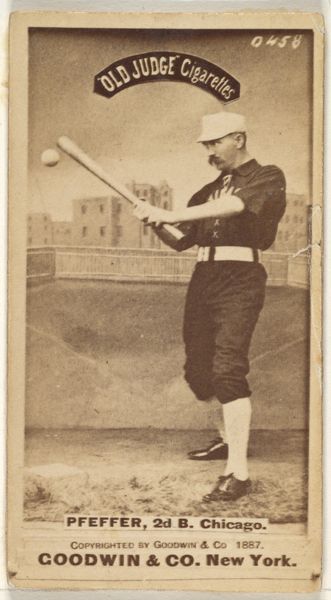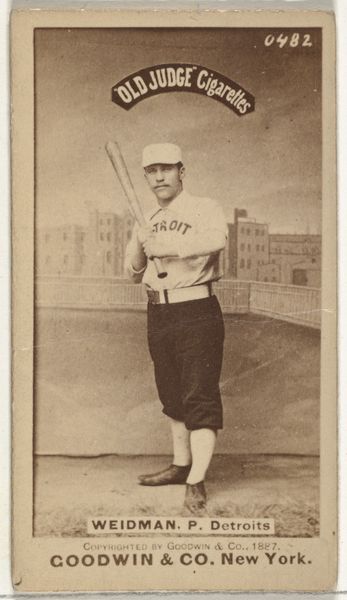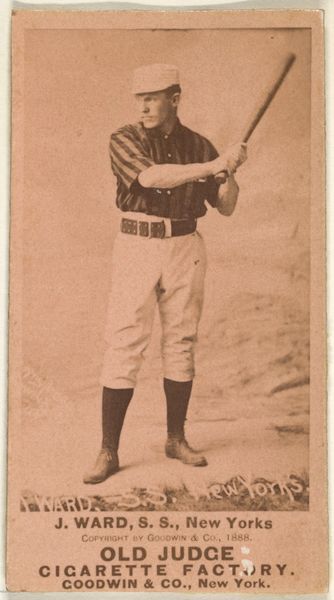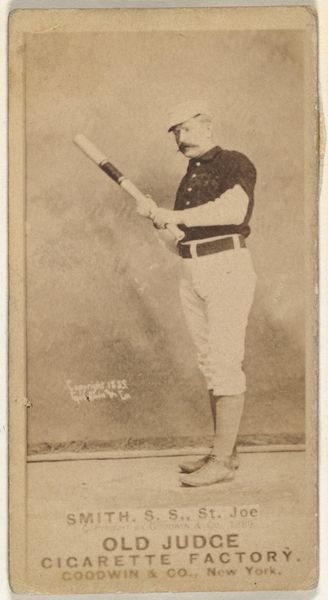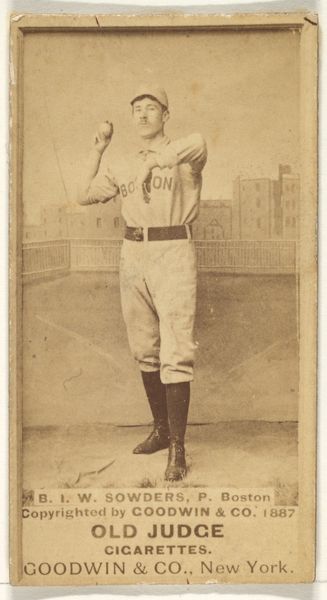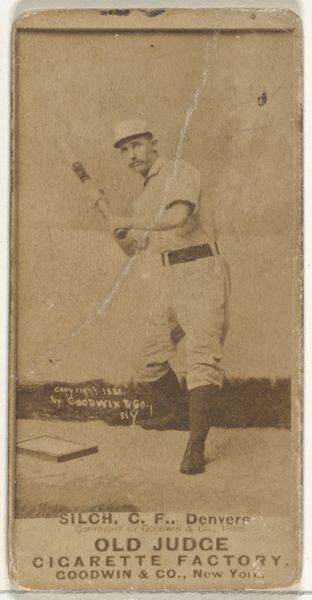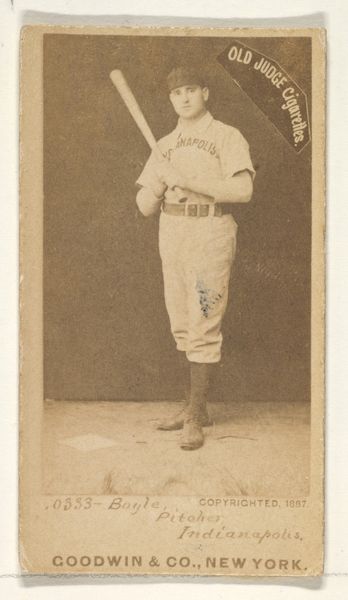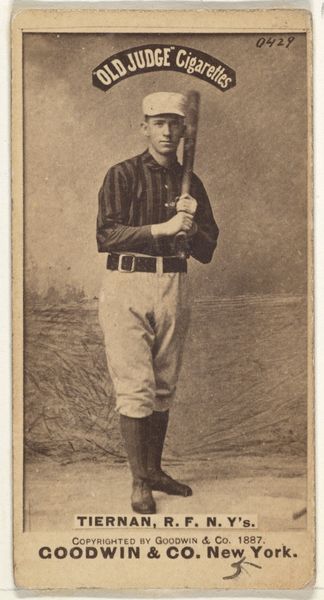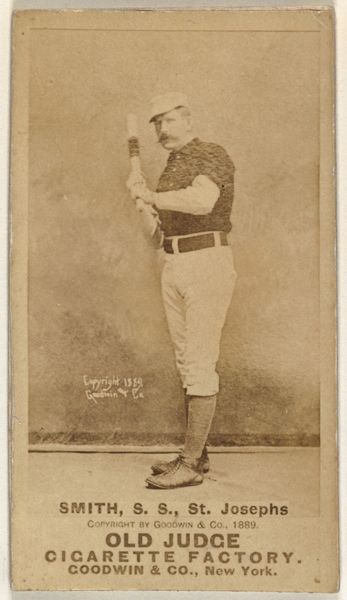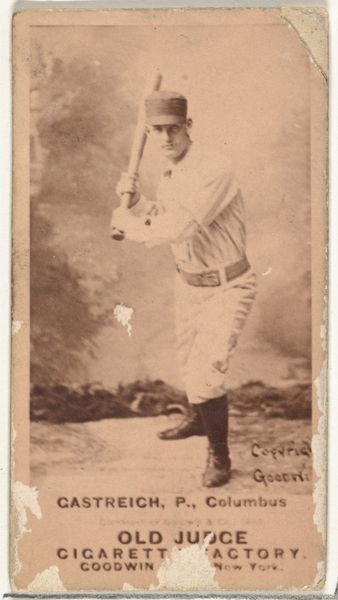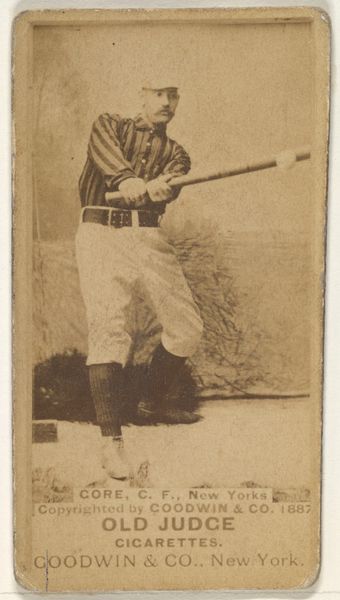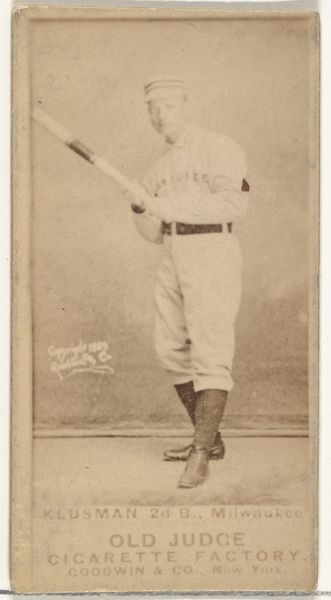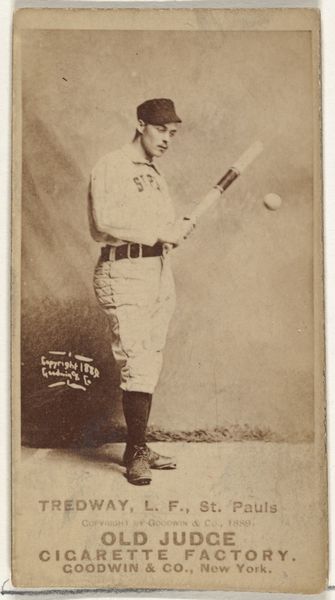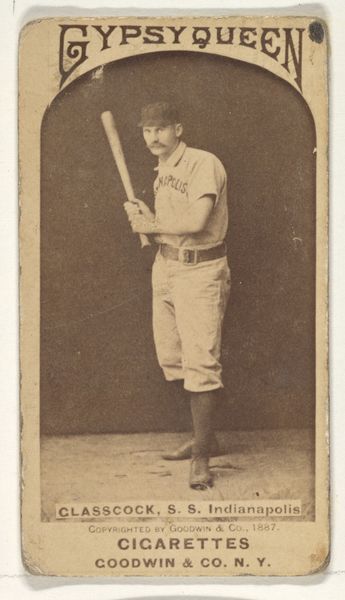
Dell Darling, Catcher, Chicago, from the Old Judge series (N172) for Old Judge Cigarettes 1887
0:00
0:00
drawing, print, paper, photography
#
portrait
#
drawing
#
pictorialism
# print
#
paper
#
photography
#
historical photography
#
athlete
#
realism
Dimensions: sheet: 2 11/16 x 1 3/8 in. (6.9 x 3.5 cm)
Copyright: Public Domain
Editor: This is "Dell Darling, Catcher, Chicago" from the Old Judge series made for Old Judge Cigarettes in 1887, credited to Goodwin & Company. It’s a photographic print on paper and what immediately strikes me is how this portrait of an athlete has been made to function as an advertisement. What’s your take on it? Curator: Well, the "Old Judge" series is fascinating from a socio-historical perspective. Cigarette cards, like this one, became hugely popular, functioning as both collectibles and advertising tools. They offer us a glimpse into the late 19th-century obsession with baseball and the burgeoning cult of celebrity surrounding athletes. Consider how the placement of the “Old Judge Cigarettes” logo prominently at the top deliberately merges athletic prowess with product endorsement, creating a powerful message of association. Editor: That makes sense. So it's not just about admiring Dell Darling’s skills, but also about selling cigarettes. How did these cards influence the perception of baseball players at the time? Curator: These cards played a vital role in shaping and disseminating images of athletes, contributing to their iconic status. Before mass media, this kind of image circulated widely and fueled the imagination of the public, solidifying the idea of the baseball player as a kind of modern hero. Think of it – baseball as an ascendant national pastime and imagery readily available and broadly distributed. Did the photograph's “realism” lend a sense of authenticity to both Darling and the product? Editor: It's interesting to think about how intertwined sport, advertising, and celebrity were even back then. I hadn’t considered the impact of image distribution like this. Curator: Exactly. Analyzing images like this reveals so much about the cultural values and marketing strategies of the period, reminding us that art often exists within complex systems of power and commerce. We, then, become more astute decoders of contemporary culture, alert to messaging. Editor: That’s a helpful perspective; seeing beyond just the image to the network surrounding it. Thank you.
Comments
No comments
Be the first to comment and join the conversation on the ultimate creative platform.
